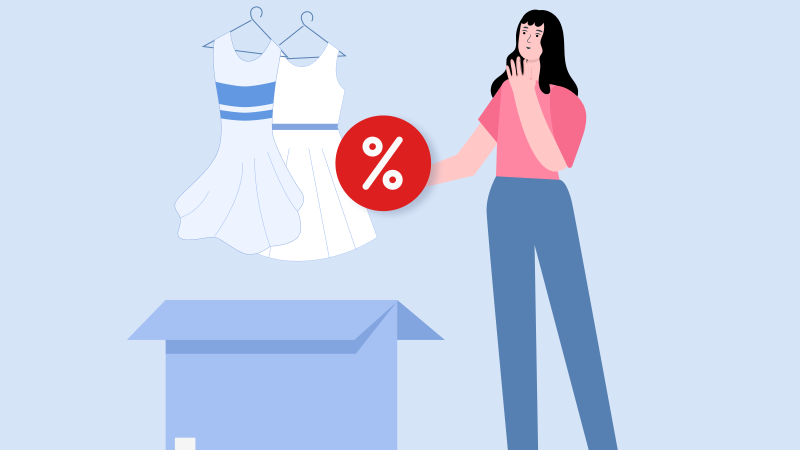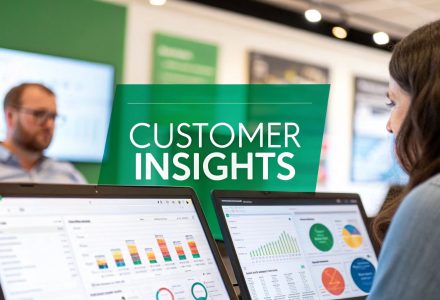Shopify has risen to be one of, if not the biggest e-commerce platforms in recent years. In June 2019, Shopify announced that more than 820,000 merchants are now using Shopify, and with the COVID-19 lockdown period encouraging more people to open online-based businesses, Shopify’s latest financial statement has reported that their revenue from merchants has since increased by more than 100%.
However, one of the key challenges for any of these businesses is not only how to generate enough traffic to our Shopify store, but also how we can convert this traffic into actual paying customers.
This is why in this guide, we will discuss how we can grow the conversion rate of your Shopify store.
What Is a Good eCommerce Conversion Rate?
Although different Shopify stores might have significantly different conversion rates based on the product you sell, your average price, and other factors, in general, if your sitewide conversion is around 2 to 3%, we can say it’s fairly healthy.
If, however, your sitewide conversion rate is below one percent, you will struggle to generate profit, especially if you also spend a lot on advertising and marketing.
Here are some statistics from reputable sources about the average conversion rate in Shopify Stores
- According to Wolfgang Digital’s 2019 KPI report, the average eCommerce conversion rate is around 1.85%.
- A survey in May 2020 by Little Data report reported that the average conversion rate for Shopify stores is at 1.6%
- Monetate’s 2020 KPI and benchmark report suggested that the average conversion rate in the US is 2.23%, but in the UK it is significantly higher with 4.04%
- IRP Intelligent Commerce put the average conversion rate during 2018 at 1.55%, a marginal increase from 2017
However, even reaching a 2% sitewide conversion rate can be quite challenging, and you will also need to consider the fact that you might have different conversion rates for different types of customers, traffic sources, devices, and other factors.
Obviously, however, you should aim well above 2%, and this is where conversion rate optimization comes in.
What Is Conversion Rate Optimization?
Conversion Rate Optimization, or CRO, is in a nutshell, an effort or systematic effort for increasing the percentage of website visitors that take the desired action. More specifically, in an eCommerce setting, the desired action is to make a purchase, converting visitors into actual customers.
Below, we will discuss the process of implementing CRO in a step-by-step guide.
The Process of Conversion Rate Optimization
Step 1: Data Gathering
Proper conversion rate optimization should begin with gathering enough data to assess your site’s current conversion rate, and we can use the free and handy Google Analytics for this purpose.
Configuring funnels & goals in Google Analytics
There are three funnel-related reports in Google Analytics that you can use to assess your site’s conversion performance and especially in finding bottlenecks and leaks in your conversion funnel:
-
- Funnel visualization report: go to Conversions, then Goals, then Funnel Visualization. It will show the basic visual overview of your funnel according to the selected goal.
- Reverse goal path report: go to Conversions, then Goals, then Reverse Goal Path. This will show your actual funnels, including those you didn’t even realize existed.
- Goal flow report: go to Conversions, then Goals, then Goal Flow. Arguably the most useful, will show the most accurate path to conversion on your site.
You’d want to gather as granular data as possible, so clean up any data you don’t need, and also gather as much information as you can by assessing conversion performances across different browsers, devices, etc.
Step 2: Research
The next step is to research the data you’ve gathered in the previous step. We can use various research methods depending on your objectives and needs, but here are some important ones to consider:
- Quantitative Research
- Analytics: you can start with Google Analytics or other web analytics platforms, add tracking for your conversions and analyze patterns like which page your visitors land on first, what devices and browsers they use, their demographic data, etc.
- Heat and scroll maps: you can use various heatmap analytics tools to analyze your visitor’s behaviors, find areas in your website that are not very optimized, and areas you can leverage.
- Funnel analysis: using tools like Google Analytics’ conversion funnel tracking to visualize the flow of visitors across your web pages.
- Qualitative Research:
- Customer interviews: you can ask your actual customers and prospects about their experience with your website and gain feedback on how you should optimize the site.
- Surveys: you can use various tools and apps to quickly launch online surveys about your site’s conversion performance.
- Usability tests: create a focus group consisting of random users so that they can navigate your website and identify common issues, especially regarding conversion.
Step 3: Synthesis
The next step is about using your research results to synthesize potential solutions you can implement. In this step you should:
- Plan the changes in your business
Use your research results to figure out the key areas you can optimize, essentially by figuring out:
- How people are attracted to your website. Improve upon what already works.
- The obstacles that might stop conversion. Eliminate them as much as possible.
- The triggers causing them to convert. Leverage upon them.
- Prioritize based on potential impacts and feasibility
While there might be various different solutions you can synthesize, it’s best to find just a select few to conserve budget and maximize potential impact. As a general rule of thumb, choose implementations with the highest potential impact, lowest amount of investment, and lowest risks.
Step 4: A/B Test
One of the key foundations of CRO is A/B Test.
A/B testing is essentially comparing two versions (A and B) of your web page or different elements on the web page to see which performs better. For example, sending two different images to different users and comparing their performances.
You should A/B test everything, whenever possible, choose the version that performs better, and little by little you’ll improve your site’s conversion.
Step 5: Insights
Finally, the last step is about translating customer behaviors you’ve researched and synthesizing them into actionable business insights to improve your conversion rate.
As you can see, data gathering is very important in implementing CRO on your website, and at the bare minimum, your eCommerce site should have the Google Analytics Enhanced Ecommerce plugin set up on your site.
10 Tips To Increase Conversion Rate on Shopify
1. High-Converting Website Design
Why is this important:
One of the biggest mistakes in the eCommerce business is to make it difficult for your visitors to convert: needing them to fill lengthy forms with a lot of fields before they can sign up, needing too many payment details, making the “buy now” CTA button difficult to find, and so on.
In short, your website isn’t conversion-optimized.
Use the insights you’ve gathered from the Conversion Rate Optimization process discussed above to ensure a high-converting website design. Converting visitors into customers is already challenging, so don’t add to the difficulty: make it as easy as possible for your visitors to convert with as few steps as absolutely needed.
2. Improve Your Copy
Why is this important:
Content is king, and in an eCommerce website, how well your product description is written can make or break the product’s sales performance.
An important thing to understand is that we humans don’t actually buy things or services, but rather we buy the benefits we get from these products.
Thus, your product description shouldn’t be a lifeless list of your product’s features but should focus on communicating how this product/service can benefit users.
3. Use High-Quality Images and Videos
Why is this important:
Well-taken, 360-degree product photos boost conversion dramatically.
Also, remember that in an online shopping experience, customers can’t actually feel or touch your product online. But they can watch you do it via videos. Use high-quality videos whenever you can to grab your user’s attention and build trust. Put yourself in their shoes and create situations that allow them to see the details and imagine themselves using your product via images and videos.
4. Website Speed
Why is this important:
According to Google themselves, half of us will leave a website if it takes more than three seconds to load.
Also, page speed is one of the major SEO ranking factors nowadays, so if your site loads slowly, it will hurt its ranking on Google and other search engines.
5. Mobile-Friendly
Why is this important:
Similar to the above, mobile-friendliness is a major SEO ranking factor. In fact, Google now only prioritizes mobile-friendly websites on their SERP.
Conversion-wise, more and more people are now exclusively using their mobile devices to browse the internet, including to shop. If your site isn’t properly optimized for mobile, you won’t get too many conversions.
6. Social Proof
Why is this important:
Fairly self-explanatory. In this day and age, nobody buys from any online sellers with 0 reviews and negative reviews. According to HubSpot, 88% of customers now trust online reviews as their main factor in making a purchase decision.
Encourage your existing customers to leave their (positive reviews). An effective way is to first offer an incentive, like giving them a discount code in exchange for a review or a social media mention. Also, build relationships with influencers in your niche and grow your presence on social media.
Social proofs might as well be the most valuable asset in this social media age so make sure to put extra attention to it.
7. Simple and Fast Checkout
Why is this important:
As discussed above, we should make it as easy as possible for people to convert, and in this case to make a purchase. Ask only the essential information that is absolutely needed, and nothing more. Make sure all the buttons are easy to find, and if you use forms, test on as many devices as you can whether the fields are easy to fill on smaller screens.
However, don’t use too many fields. 39% of mobile users abandoned the cart because of the difficulty of entering their personal information. So, make it as simple and fast as possible.
8. Exit Intent Popups
Why is this important:
Exit intent popup is essentially showing a popup, typically an offer to sign up to your email newsletter, download free content, discount coupon, etc., when the visitor shows signs that they are going to leave the page.
Exit popups can help increase your conversion by 2% to 4%, and it’s fairly low-risk and low-cost. While popups are typically annoying, they are about to leave anyway, making it more low-risk than your typical popup advertisement.
You can even make your exit-intent popups more effective if you can predict the user’s objection/obstacle and communicate possible solutions. For example, if you predict that price is an issue, you can immediately offer a cheaper alternative product or a discount.
9. Abandoned Cart Remarketing
Why is this important:
Remarketing, is in a nutshell, showing an ad to those who have triggered a certain action, and in this case, you are going to show a personalized ad to those who have abandoned your cart.
Abandoned cart remarketing is very effective, and shoppers are 70% more likely to convert with abandoned cart marketing.
If you are looking to grow as a business, abandoned cart remarketing and other forms of abandoned cart recovery campaigns (i.e. personalized email marketing after an abandoned cart) are extremely important.
10. Stellar Content
Why is this important:
Again, content is king.
In an eCommerce setting, you should consider two things regarding content: how these content pieces will help attract potential buyers to your site, and how your content can help boost your site’s SEO.
Although you should also pursue SEO performance, however, keep in mind you should focus on creating high-quality content that is going to be valuable for your target audience.
The more you can provide value, the better you can establish your credibility, and indirectly they’ll think that you are a trustworthy seller and they’ll be more likely to purchase from you.
End Words
The tips we’ve shared above are among the most effective in improving the conversion rate of your Shopify Store. However, they are certainly not the only ones, and you can be creative in growing your eCommerce business using various other tactics, with those we’ve discussed above as your foundation.
Don’t forget that above anything else, the best marketing is when people recommend your business to their peers and friends, so make sure to always deliver high-quality, satisfying products and services, and always deliver on your promises.
If you’re looking for a proven team of growth experts to grow your business, reach out now to learn how you can work with our growth marketing agency and double or even triple your sales. Have any questions or just want a second eye? Email us at [email protected]. Don’t worry, we don’t bite.






